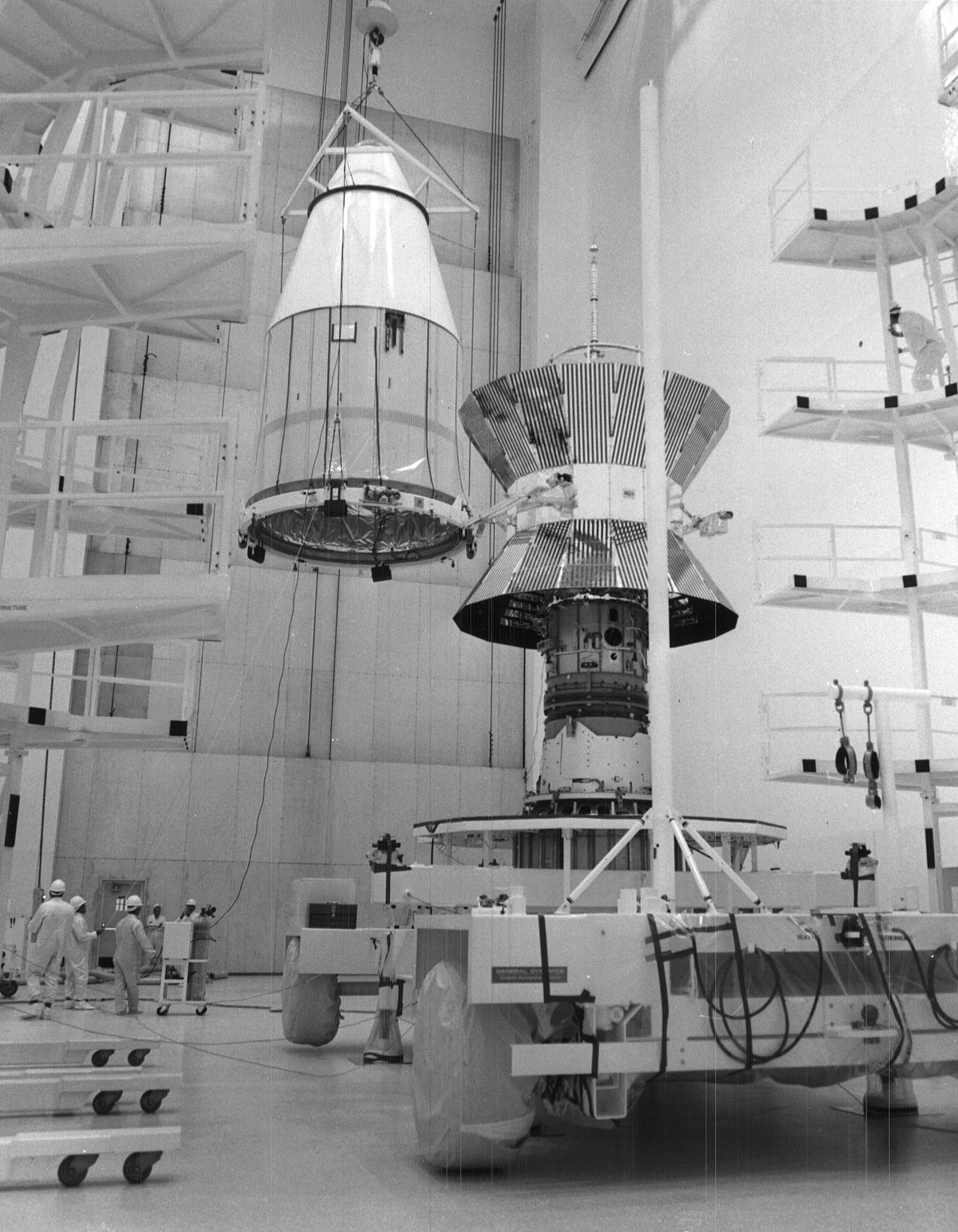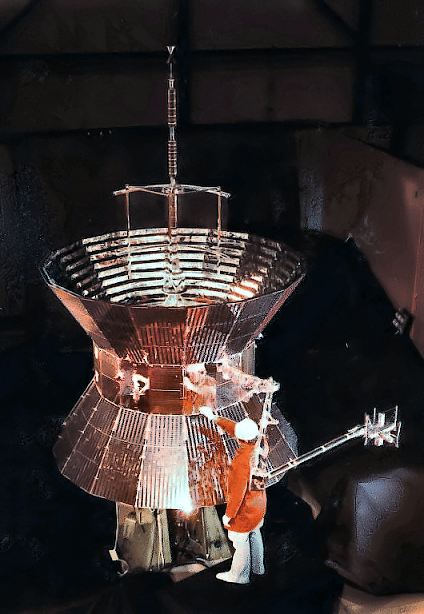Helios Program
From Spacefaring
Q664667
pair of solar probes operated by NASA and DLR.
 Auszeichnung für drei Physiker vom Institut für Reine und Angewandte Kernphysik der Christian-Albrechts-Universität (CAU) durch die amerikanische Weltraumbehörde NASA (Kiel 67.509)
Auszeichnung für drei Physiker vom Institut für Reine und Angewandte Kernphysik der Christian-Albrechts-Universität (CAU) durch die amerikanische Weltraumbehörde NASA (Kiel 67.509) Bottom view of the Helios spacecraft showing the three Zodiacal light photometers P15, P30, and P90 as well as the South (S) micrometeoroid sensor.
Bottom view of the Helios spacecraft showing the three Zodiacal light photometers P15, P30, and P90 as well as the South (S) micrometeoroid sensor. Brightness of the zodiacal light along the orbits of Helios 1 and 2 as observed by the P15 photometers; blue: inward, red: outward motion. The peak at 0.8 AU was caused by Comet West passing through the field of view.
Brightness of the zodiacal light along the orbits of Helios 1 and 2 as observed by the P15 photometers; blue: inward, red: outward motion. The peak at 0.8 AU was caused by Comet West passing through the field of view.![Brightness of the [[zodiacal light]] along the orbit of Helios 1 and 2 as observed by the P16 photometer; blue: inward, red: outward motion. The peak at 0.8 AU was caused by [[Comet West]] passing through the field of view.](https://upload.wikimedia.org/wikipedia/commons/2/26/HeliosZLI.jpg) Brightness of the zodiacal light along the orbit of Helios 1 and 2 as observed by the P16 photometer; blue: inward, red: outward motion. The peak at 0.8 AU was caused by Comet West passing through the field of view.
Brightness of the zodiacal light along the orbit of Helios 1 and 2 as observed by the P16 photometer; blue: inward, red: outward motion. The peak at 0.8 AU was caused by Comet West passing through the field of view.![Luminosity of the [[zodiacal light]] along the orbit of Helios 2 as observed by the P16 photometer. The peak at 0.8 AU was caused by [[Comet West]] passing through the field of view.](https://upload.wikimedia.org/wikipedia/commons/9/92/HeliosP16_radial_profile.jpg) Luminosity of the zodiacal light along the orbit of Helios 2 as observed by the P16 photometer. The peak at 0.8 AU was caused by Comet West passing through the field of view.
Luminosity of the zodiacal light along the orbit of Helios 2 as observed by the P16 photometer. The peak at 0.8 AU was caused by Comet West passing through the field of view.Individual site searches
Google custom search of specialist sites
Google custom search of general sites








